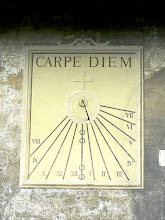
.jpg)
+recover+Asteroid+samples.jpg)

+recover+Asteroid+samples.jpg)
PHOTOS: "Hayabusha" Asteroid Recover Samples;
Junichiro Kawaguchi Project Manager of JAXA;
Asteroid;
Japanese Hayabusa final approach
re-entering capsule on June 13, 2010
_____________________________________________
HAYABUSA FINAL APPROACH JUNE,13 2010
=====================================
HAYABUSA’s mission was:
To bring back samples from an asteroid
and investigate the mysteries of the
birth of the solar system.
__________________________
HAYABUSA (MUSES-C) has been developed to investigate asteroids.
HAYABUSA explored an asteroid named "Itokawa," after the late Dr. Hideo Itokawa, the father of Japan’s space development program.
HAYABUSA is traveling through space using an ion engine.
The purpose of the HAYABUSA mission is sample return from the Itokawa by traveling through space using an ion engine and arriving at the asteroid autonomously to acquire a material sample.
Until now, the only extra-terrestrial celestial body from which we have gathered samples is the Moon.
But since the matter that comprises large bodies such as the planets and the Moon has changed over time due to thermal processes, these bodies cannot provide us with a pristine record of the solar system.
Asteroids, on the other hand, are believed to be small enough to have preserved the state of the early solar system and are sometimes referred to as celestial fossils. A soil sample from an asteroid can give us clues about the raw materials that made up planets and asteroids in their formative years, and about the state of the inside of a solar nebula around the time of the birth of the planets.
However small the sample amount may be, its scientific significance is tremendous.
HAYABUSA, which was launched on May 9, 2003, achieved its goal of arriving at the Itokawa asteroid and performing scientific observations.
As a result, its mission was featured in the scientific magazine "Science" as a first Japanese mission to illustrate various new findings about the asteroid including its gravity and surface conditions.
The HAYABUSA returned to Earth on June 13, 2010,
dropped its onboard capsule in Australia, and
completed its operation.
-----------------------------------------------
HAYABUSA’s mission will play an important role in future
space-probe journeys.
HAYABUSA employs a new technology - the ion engine.
This engine first ionizes the propellant gas, Xenon, then electrically accelerates and emits the ions, to propel itself forward.
As it is a highly efficient engine, it is expected to be an important technological tool for our future exploration of the Moon and the planets.
HAYABUSA will demonstrate this technology.
Another innovation that HAYABUSA will demonstrate is the Autonomous Navigation System, which enables the probe to approach a far-away asteroid without human guidance.
The system works by measuring the distance to the asteroid with the Optical Navigation Camera, and using Light Detection and Ranging.
HAYABUSA will not only gather samples but also observe the asteroid with various scientific devices and measures.
For that purpose, it is equipped with a Telescope Wide-View Cameras and Light Detection and Ranging, as well as with a Near Infrared Spectrometer.
It will also employ a hopping robot, which can move around on the asteroid’s surface.
When HAYABUSA returns to Earth, a re-entry capsule bearing a surface sample from the asteroid will separate from it and plunge into the Earth’s atmosphere.
This is also a very important experiment in space engineering.
Major Characteristics :
International Designation Code 2003-019A
Launch Date 13:29, May 9, 2003 (JST)
Launch Vehicle M-V-5
Location Uchinoura Space Center
Shape Core 1m x 1.6m x 2m
5.7m full width at deployment of solar paddle
********************************


0 Comments:
Post a Comment
<< Home